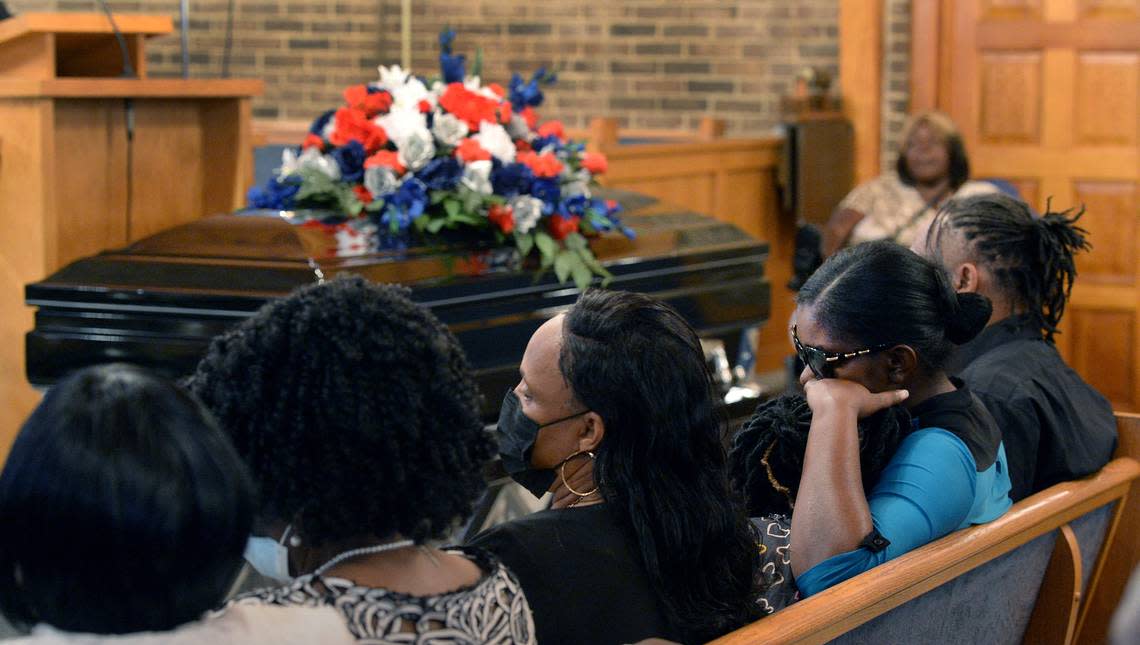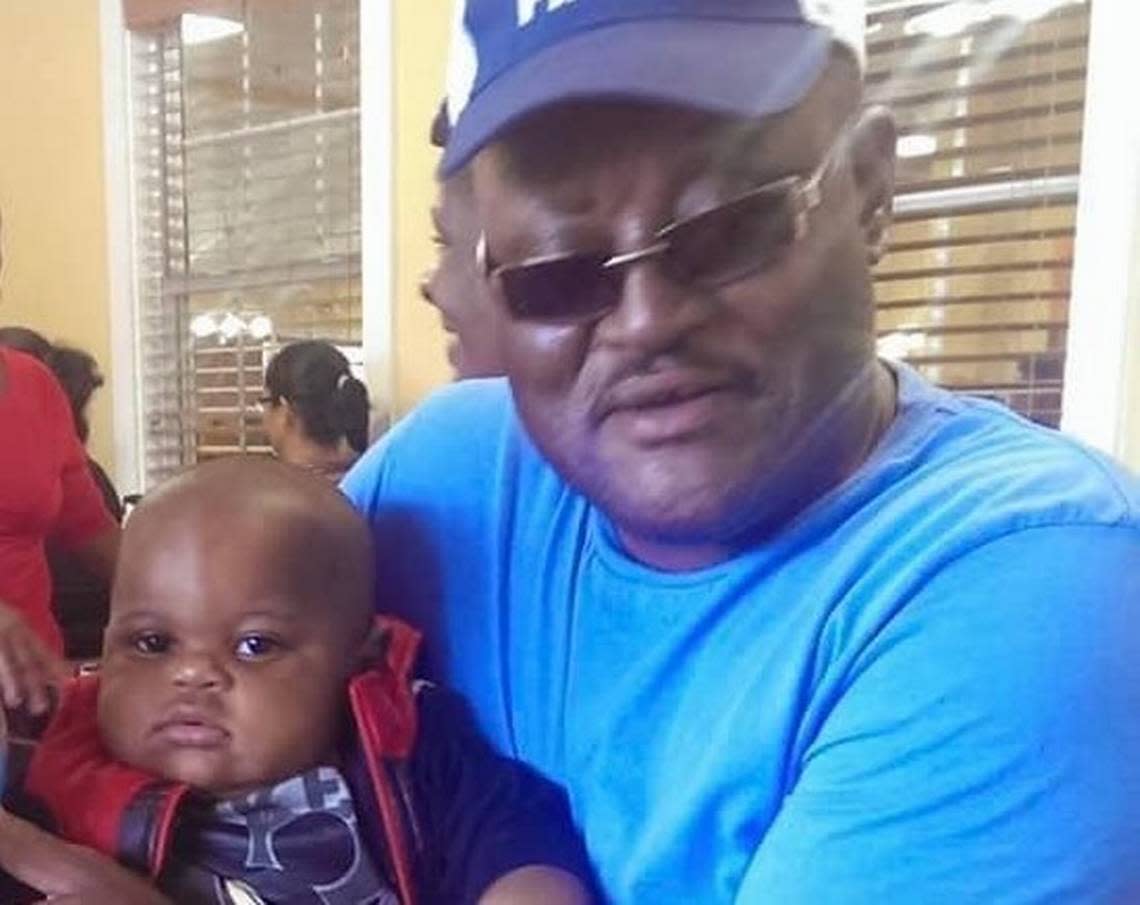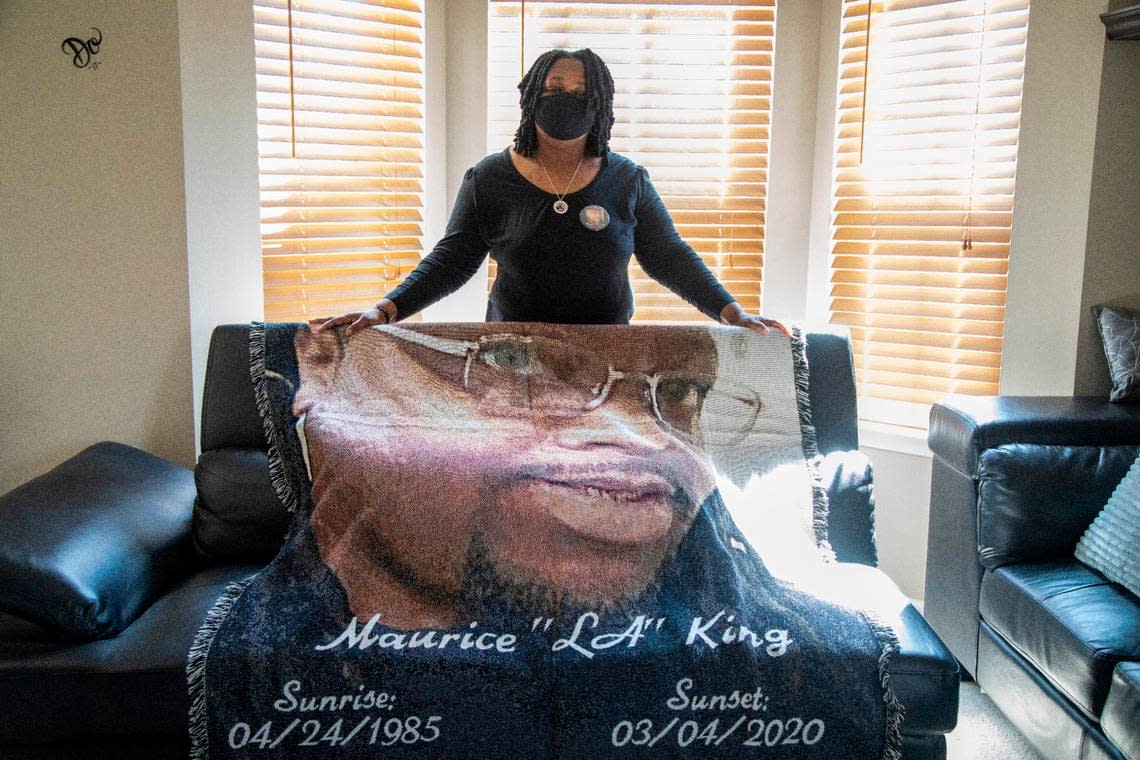Violence-linked deaths rise in NC jails. Inspectors find the same lapse every time.
Retired farm worker William Surles was weakened by severe diabetes when he entered the Harnett County jail last winter. He had lost three toes and needed a walker. While detained, doctors removed two more toes, his daughter said.
Surles, 64, was supposed to be confined just one month to serve a short sentence on a probation violation related to a driving while impaired conviction. But 20 days in, on Dec. 19, detention officers found him dead in his bunk.
Harnett County Sheriff Wayne Coats has provided little information to Surles’ daughter or the public on how her father died. But a state investigation and information his daughter and her attorney have obtained elsewhere indicate Surles’ life came to a violent end.
Surles had been in a fight hours before he was discovered dead, Department of Health and Human Services investigator’s notes say. A photograph that Lawanda Snead, his daughter, obtained from a funeral home shows swelling on his left eye and cheek. No one in law enforcement has offered an explanation.
“My Daddy couldn’t take care of himself, he was helpless,” Snead, a Clayton resident, said tearfully. “I tried to call and find out what was going on and I got attacked because I’m calling to find out what happened to my dad.”
If violence played a role in Surles’ death, he would be the sixth person locked inside a North Carolina county jail to die after a violent encounter since 2019, state records show.
That’s a dark turn after several years when no inmate deaths were attributed to inmate-on-inmate violence, according to DHHS records that The News & Observer collects.
In all six deaths, state DHHS investigators concluded that detention officers weren’t checking inmates at least twice an hour, which state regulations require.
Regular rounds are critical to the safety and security for inmates and staff in county jails.
Numbers of deaths rising
The State Bureau of Investigation is investigating how William Surles died, Harnett County District Attorney Suzanne Matthews confirmed. After six months she is still waiting on autopsy results. That could take time.
A Charlotte Observer and News & Observer investigation recently revealed that the state Office of the Medical Examiner has a severe backlog due to a staffing shortage and a spike in needed death investigations.
The little bit of information formally disclosed about Surles’ death comes from a state DHHS inspection report.
Harnett County detention officers should have checked Surles at least 44 times in the 22 hours leading up to his death, but the DHHS found only 32 checks. A sheriff’s administrator does not state when Surles was last seen alive inside the jail. Nor does he identify the officer who was supposed to have checked on Surles.
“Cannot answer at this time,” sheriff’s Maj. Gary McNeill wrote in a required jail death notice to the DHHS.
The 2017 News & Observer investigation Jailed to Death found that in a third of all jail deaths, the DHHS turned up supervision failures. Many of the failures are missed checks, though sometimes investigators found inoperable security cameras or intercoms that would have helped spot inmates in distress.

The number of incarcerated people dying inside county jails has more than doubled over the past seven years, DHHS records show. At least two of the record 77 jail inmate deaths last year resulted from inmate violence.
Surles’ death might be the third.
Life lost in Edgecombe County
Surles died in the Harnett County jail less than three weeks after another Darren Vick, 39, lost his life while locked up inside the Edgecombe County jail. Vick was attacked by two other inmates on Nov. 30 there, the sheriff’s office reported. He died in a hospital the following day.
The DHHS investigation found no evidence of jail staff checking on Vick in the three hours before he was found in distress. All told, there was no evidence of checks in 19 of the 24 hours that day.
Both the Harnett and Edgecombe jails were operating with staff shortages at the time the men died, according to the DHHS investigations.
Edgecombe County Sheriff Cleveland Atkinson last week declined to comment about what happened to Vick while in his department’s custody.
DHHS has repeatedly cited the jail for supervision failures in biannual inspections and following inmate deaths. Disability Rights North Carolina in a report on county jails last year found it to be among the worst in complying with jail safety regulations.
A lack of supervision risks harm to inmates in two ways, jail safety experts say. Detention officers not watching inmates can’t prevent or break up violence or seek timely medical attention after an attack.
“There are jail homicides and prison homicides that were intended to be homicides – somebody went to kill someone,” said Madalyn Wasilczuk, a University of South Carolina who leads its Youth Defender Clinic. “There are also fights where it’s like: ‘I punched you and because I punched you, you hit your head on the floor and died’. And emergency care in that situation is more likely to save someone.”

She and Andrea Armstrong, a law professor at Loyola University in New Orleans, say recent data on how people died while detained in county jails nationwide is hard to come by.
The last federal report tallies jail deaths through 2019, before the pandemic began. Those reports have typically shown that violence accounted for a small percentage of jail deaths. Suicides, health issues and overdoses accounted for more.
The pandemic’s impact on jails may be a factor in the uptick in violent deaths in North Carolina, they both said. Many jails reduced their populations when the pandemic hit but are now taking in more inmates while staffing continues to lag.
Harnett and Edgecombe counties were each averaging roughly 90 percent capacity when Surles and Vick died, despite the number of detention officer vacancies, said Luke Woollard, a staff attorney for Disability Rights.
The lack of staffing can also prompt jails to keep more inmates in isolation, which can trigger violent behavior, the experts said. So may the presence of illegal drugs – notably fentanyl, which is potent in small amounts – inside jails.
“Anecdotal evidence indicates that drugs are increasingly available behind bars, which may play a role in altering individual mood states as well as fomenting conflict over access to and possession of a contraband item,” Armstrong said.
Anyone capturing the big picture?
State DHHS officials referred a reporter’s questions about the jump in violent jail deaths to the sheriffs in charge of the jails where the inmates died or to the N.C. Sheriffs’ Association.
Orange County Sheriff Charles Blackwood, president of the North Carolina Sheriffs’ Association, knows violence can be lethal inside a county jail.

An inmate was charged in the death of Maurice King, who died after an assault in his cell at the Orange County jail on March 4, 2020. DHHS officials cited the jail for not checking on King as the regulations require, as video showed detention officers walking past King’s cell without looking in to check on him.
His family filed a lawsuit against the sheriff.
Blackwood said he wasn’t aware violence-related deaths inside county jails were on the rise statewide, he said. The sheriff also said he did not know if assaults have increased. Sheriff departments, which run county jails here, are not required to report that information to the state, Woollard said.
Staff shortages and the risk of violence in jails underscore the importance of alternatives to jailing people who aren’t a threat to anyone or a flight risk, Wasilczuk and Woollard said. Alternatives can include reducing bail amounts or imposing punishments that don’t involve incarceration.
Surles’ daughter wishes such an alternative was offered to her father. He grew up on a Harnett County farm and made a living repairing tractors for an area equipment dealer for much of his life, she said. He relaxed after work by having a few beers sitting in his truck parked at home, listening to Otis Redding and other R&B legends.
Why, she wondered, couldn’t they have sent him home after his toe-amputation surgery?
News & Observer data editor David Raynor contributed to this report.
William Surles jail death report by Dan Kane on Scribd
